Whether you were in an accident or something similar, it is possible to get tire marks on your car, which can be tricky to get off without the correct method.
Spotting these tire marks on your car is not pretty, and it can severely hinder or ruin your vehicle’s paint job if it is not taken care of promptly. You also must be careful not to ruin the paint with the wrong cleaning solution.
There are six ways to get tire marks off your car. They include using a magic eraser, using WD-40 and a towel, using mild soap and a cloth, using an adhesive removing, using Racing Rubber Remover, or using a polishing and waxing compound. All options have a specific purpose, but they work well.
Car tire marks are a pain to remove, but with the right process, it can be easier. They are usually left on your car's paint and can be challenging to remove with a washcloth or bucket. This guide will show you how you can get rid of those nasty tire marks on your car and even the interior of the car too.
The tire marks on your car are unsightly and damage the paint. They can also leave a sticky residue, eventually leading to more problems. If you want to get rid of them, below are some tips for you to try.
Tire marks on cars are unsightly, but they can be easily removed with the right tools and a little elbow grease. The biggest concern is keeping your car’s paint intact when removing them.
When you're driving, you often see tire marks on the road. You may not be able to get the tire marks off your car, but there are a few ways to remove them.
The most effective way to remove tire marks from your car is by using a squeegee or a cloth with water and soap. The other option is to use more advanced items like WD-40 or an adhesive remover.
There are a few ways to go about it, and we have listed the six best ways to get tire marks off your car below.
Removing tire marks from your car depends on a few factors.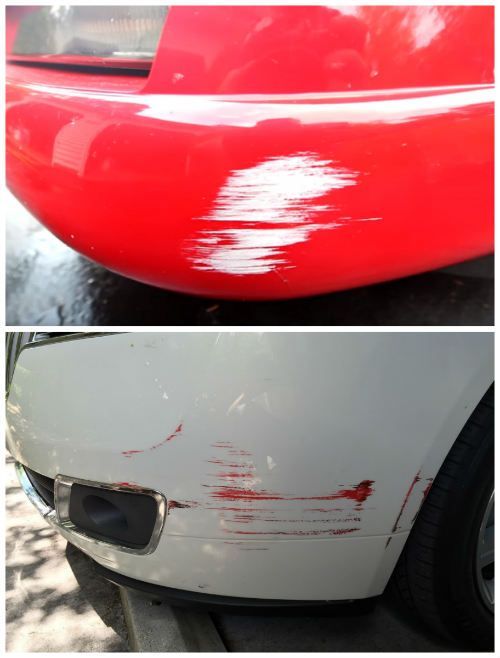 For example, a white vehicle needs a different approach than a car with darker paint.
For example, a white vehicle needs a different approach than a car with darker paint.
We have you covered. Below are the six ways to get tire marks off the car without ruining the paint or damaging the exterior.
Many people wonder if a magic eraser is safe for use on a car's paint. It is, and we love it as one of the most versatile cleaning tools for the interior or glass of the car.
It is highly effective, but scrubbing too hard can cause some paint to fade. Avoid using too much pressure when rubbing tire marks with this eraser.
First, spray a lubricant on the area and let it settle for a few seconds. After this, you can softly rub the area with the magic eraser, and the marks will come right off.
WD-40 qualifies as a multi-use product and can fix many problems with your car. This product can also work as a lubricant to combine with another method.
For example, spraying an area with tire or scuff marks with WD-40 and then using a magic eraser in the area works well. However, sometimes the WD-40 is quite strong, so combining it with a magic eraser is too powerful.
However, sometimes the WD-40 is quite strong, so combining it with a magic eraser is too powerful.
The safest method is to try WD-40 and a soft cloth first. If you struggle to remove the scuff marks, try increasing your power with a magic eraser.
Scuff marks and other tire marks can be a real pain to remove from your car. But there is a simple solution that will make it easy for you to remove them.
Another effective way to remove scuff and tire marks is using a cloth and mild soap. You should use the cloth to wipe them off in an up-and-down motion, then use the soap on the cloth to get rid of any remaining residue.
Many beginners try this method first to see how serious the tire marks are. If it fails, then they upgrade to a more advanced removal method.
Goo Gone is one of the best adhesive removers to try on your car’s exterior. It works as an effective stain remover on many different surfaces, including cars and car paint.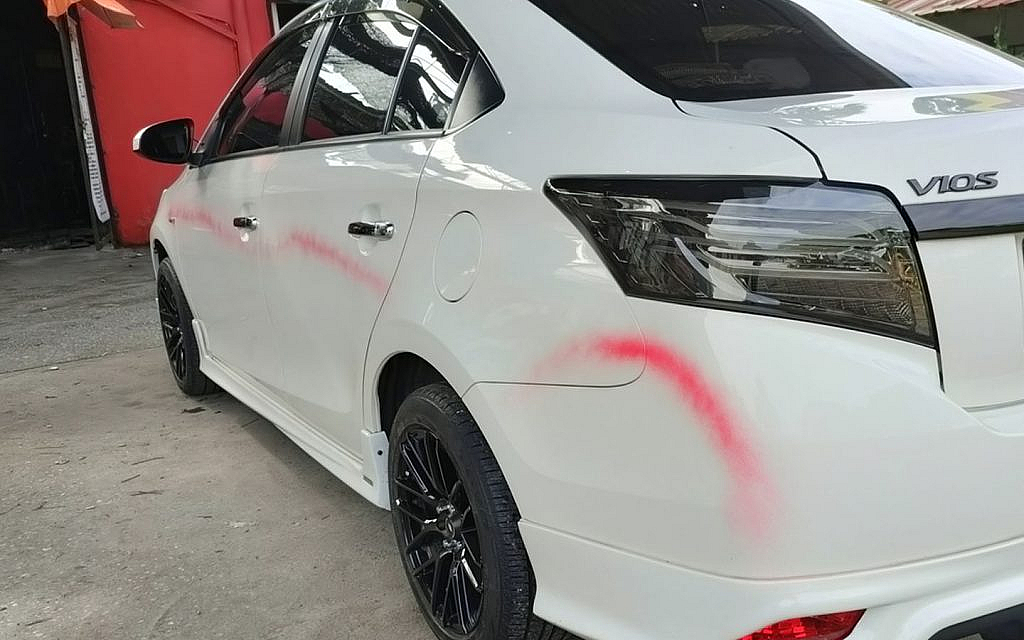
Many people fear using a product that might damage their paint, but Goo Gone is safe for cars. It won't remove the paint but will remove scuffs and scratches from it.
This works best for other sticky materials on the car’s surface too. So if the tire marks on your vehicle also include rubber pieces, this is an effective solution.
If you want to remove the scuff marks on your car, you can try using a product like Racing Rubber Remover.
This product is an all-in-one cleaner that will remove scuff marks, tire marks, and rubber marks from the exterior of your car. You only need to spray the product on the area you want to clean and wipe it off with a cloth.
It is incredibly safe for your car’s paint too. Using a microfiber cloth with this remover is the most effective method.
If you want to remove scuff marks, tire marks, and other stains from your car by hand, then you can do so with the help of a polish and wax compound.
Not only is it a great way to get rid of these marks, but it will also add a shine to your car. It works as a two-step process to remove any deformities.
Polish and wax compounds are usually applied by hand, but you can also use an automatic polisher for faster results.
With the growing popularity of car shows, car enthusiasts are always looking for a way to make their cars stand out from the rest. One of the ways that they can do this is by adding custom paint jobs to their vehicles.
When you have a car, you should always take care of its paint and make sure it is in good condition. But things can happen, and if you have ever been in an accident that resulted in tire marks left behind on your car, you understand.
Tire marks are not a cause for concern regarding the condition of your car's paint. But when cleaning them off, you need to know what to use to avoid damaging the paint.
Black rubber tire marks on a white car can be tough to remove.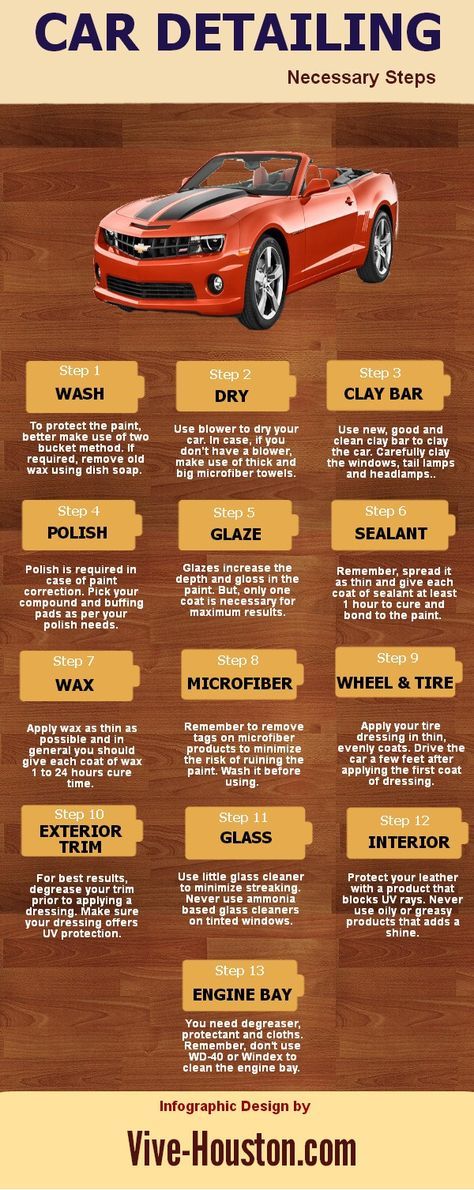 There are a few different ways to remove them, but the most common is using a rubbing compound.
There are a few different ways to remove them, but the most common is using a rubbing compound.
This can either be WD-40 and a rag or a magic eraser. But ultimately, it depends on how deep the tire marks are on the car's exterior. White paint can get stained easier, too, so you want to avoid any harsh chemicals.
Start by using basic soap, water, and a soft rag first. This is the easiest method but it tends to struggle with most tire marks on white cars.
If this fails, try using the magic eraser method next. However, if there are scratches where the tire mark happens, then the magic eraser will not provide the results you are looking for for the perfect finish.
This is where you can opt for WD-40, polish and wax, or a more durable rubbing compound. This can be used with the magic eraser as a multi-step process for the best results.
Tire marks can be a real eyesore on the interior of a car too. Whether it is from an accident or just from regular wear and tear, it is always best to remove them as soon as possible.
This will vary based on whether you have cloth or leather seats too. Cloth seats are easier to clean compared to leather seats.
This is because leather seats are delicate. You should only use a chemical-free stain remover, soft towel, and professional leather conditioner solution.
Typically, your vehicle will have a recommended product. Start by using a small amount on one seat area to see if it reacts as expected with your leather seats.
If so, you can wet your sponge or towel with the stain remover and begin softly rubbing the areas with tire marks. Be gentle while doing so.
Next, rinse your sponge or towel with warm water. Allow time for the seat to dry, and gently use the dry towel to wipe it down.
After it dries, you can use the leather conditioner in the same areas. This will apply a shine to the seats again and help eliminate any residue still on your seat.
Having those ugly black tire marks on your car can be annoying, especially if they won’t come off when you hit it with a power washer.
So, how do you get those black marks off your vehicle without ruining the paint? It’s tricky, doing it wrong can ruin your paint, so keep reading to learn the proper method!
With the right rubbing compound and some smooth crafty hand or wheel polishing, you can remove tire marks without leaving any paint damage behind. With a quick trip to the parts store for some common inexpensive items, you will be able to remove tire marks, bird droppings, and other problematic paint scares.
If you’d like to learn how to remove tire marks from your car as well as other related facts, keep reading for more tips and information!

Whether from a bike tire, bike handlebars, a basketball, or anything else that might leave some nasty scuff marks, getting them out can be a little challenging.
Most of the time, WD-40 and a lint-free cloth with some texture to it can do the trick. However, remember to use a circular motion when rubbing against the vehicle.
WD-40 could be a temporary fix for very particular events, but they don’t remove scratches.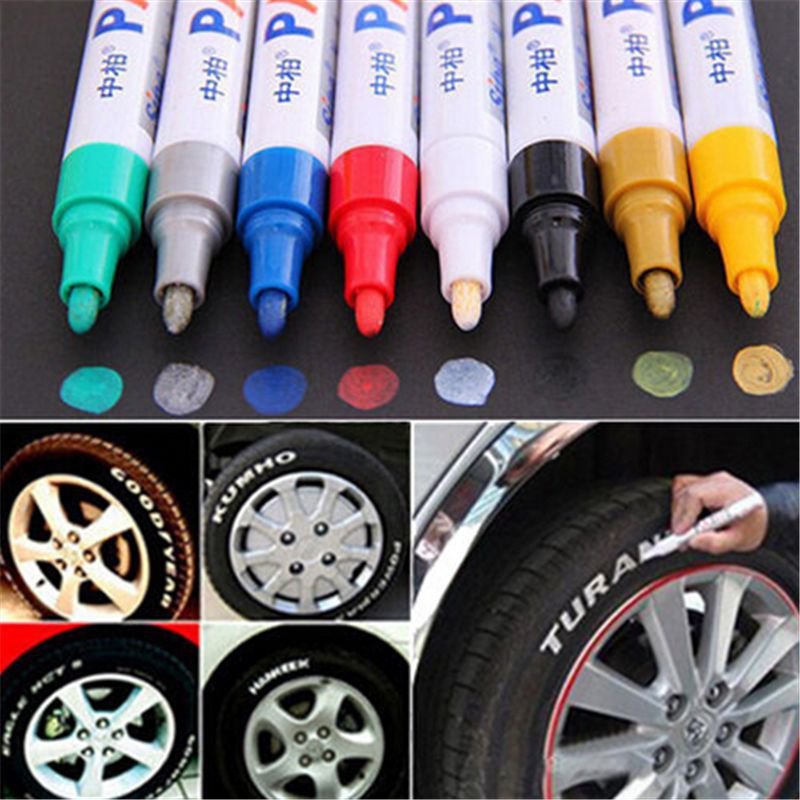 Rather, WD-40 can hide scratches as long as it’s not wiped off.
Rather, WD-40 can hide scratches as long as it’s not wiped off.
In fact, with one good wash or rain, all the scratches that seemed to disappear from WD-40 will reappear when it’s washed off.
Rubber marks and rubber scratches are different, and therefore must be removed differently.
Rubber marks are left on top of the paint, meaning you need to get rid of the mark and clean the area.
Rubber scratchers, however, are underneath the rubber mark. To cover these scratches, drivers can use WD-40, but will have to use some type of waxed compound to get underneath the clear coat and rub out the scratch.
After you have compounded the area and removed the scratches, you’ll need to wax in some protected polish over the compounded area to bring back the shine.
While Magic Erasers do a good job on car interior goo and grime, do not use one on the exterior of your vehicle.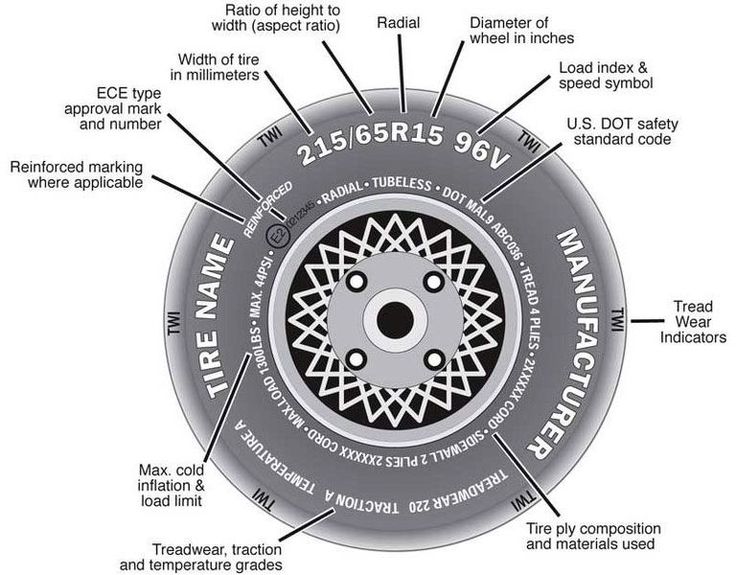
The Magic Eraser’s coarse abrasiveness will ruin your vehicle’s paint job, which will add additional repairs to your vehicle.
Goo Gone will work for removing tire marks, road grime, and other nasty car problems. However, this is a heavy solution, so make sure you use it with soap and water.
Rubbing alcohol is far too potent to use alone, and must be diluted between 10-percent and 15-percent before it can be applied to a vehicle’s paint.
Without this dilution, the full potency of rubber alcohol will surely ruin, if not remove, the paint on your vehicle. Also, rubbing alcohol should never be used on freshly painted vehicles (which goes for all other heavy cleaning agents).
To learn more, you can also read our posts on how to clean whitewall tires, if you can spray paint hubcaps, and homemade tire shine.
There are a lot of cleaning agents out there that work hard at helping you get tire marks and other rubber, gooey substances off your car’s paint. If done the right way, you will not only get the substances off the paint, but you won’t leave any permanent damage behind.
If done the right way, you will not only get the substances off the paint, but you won’t leave any permanent damage behind.
However, Make sure you read the directions and know what the best practices are for getting rid of the marks on your car without ruining the paint.
Vladimir Gavrilov
Estimated reading time: 5 minutes
2504
Category: Service Auto
Regulations require the use of information stickers on vehicles. Signs "student", "thorns" and other plates are attached to the body with glue that leaves marks. How to wipe it off without the risk of damaging the paintwork of the car?
This year, the most common sticker "Spikes" is no longer in demand by motorists. By a special order of the Government of the Russian Federation, changes were made to the Rules of the Road (SDA), which excluded this sign from the list of mandatory for use when installing studded tires.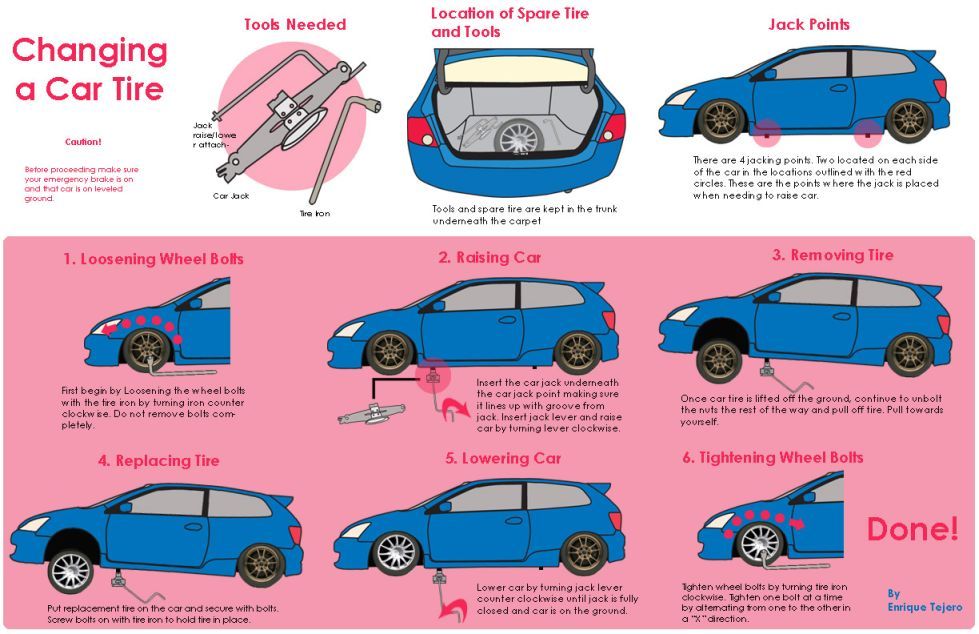 This season it is no longer necessary to glue them. Meanwhile, the unpleasant epic with the "Spikes" sticker left a mark not only in the memory of drivers, but also on car bodies. On some machines, giant stains from cheap glue have been left since last spring - it turned out to be so corrosive. How to clean it up?
This season it is no longer necessary to glue them. Meanwhile, the unpleasant epic with the "Spikes" sticker left a mark not only in the memory of drivers, but also on car bodies. On some machines, giant stains from cheap glue have been left since last spring - it turned out to be so corrosive. How to clean it up?
The most difficult thing is to remove traces of glue from the car body. After several months of driving, the glue is absorbed into the surface layer of the varnish and hardens, turning into a dense polymer crust that cannot be rubbed off.
To carefully remove the sign along with the adhesive, it is necessary to arm yourself with special tools. If the sticker does not come off in one layer, then there is a high probability that the adhesive has already gone through the polymerization process and has shrunk. It will have to be torn off piece by piece.
Never rub the sticker with plastic scrapers or hard objects.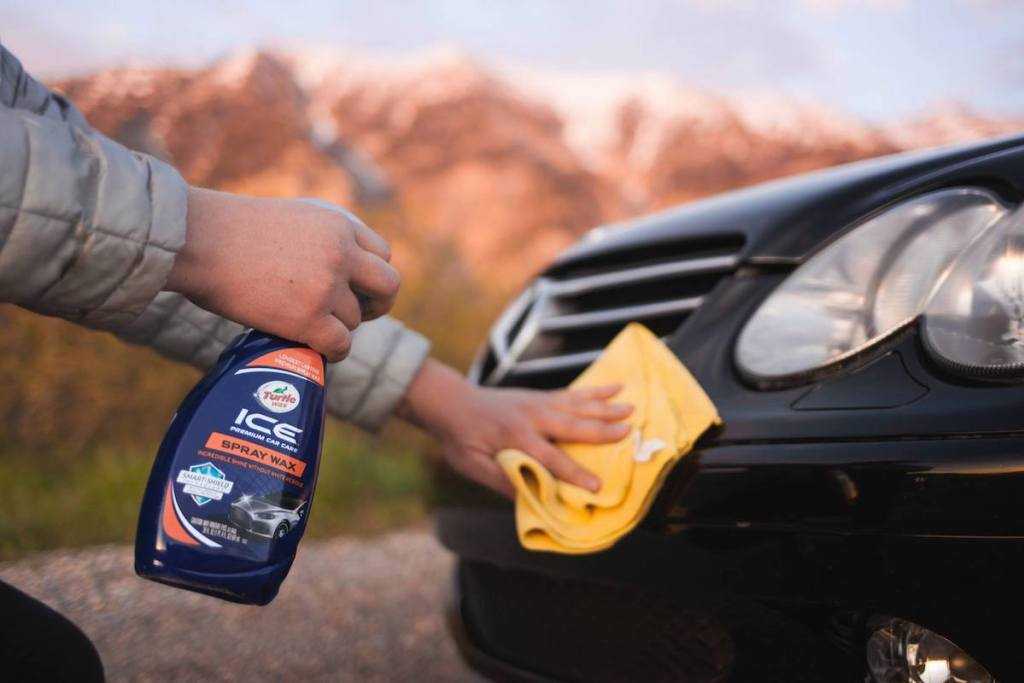 There may be scratches that cannot be hidden without subsequent polishing. To begin with, we hook up the old sticker and carefully pull it up, peeling off the sign gradually, centimeter by centimeter.
There may be scratches that cannot be hidden without subsequent polishing. To begin with, we hook up the old sticker and carefully pull it up, peeling off the sign gradually, centimeter by centimeter.
Usually stickers are made on the basis of a durable waterproof film, but if such a sticker was placed not under glass, but on the body, and was constantly exposed to direct sunlight, then the strength could suffer. There is a high risk of rupture.
It is best to gently pull the badge piece by piece until nothing but a white spot remains on the surface of the body.
When the film with the sign is completely removed, an awesome frosted triangle can be seen on the body. This is an old adhesive base that repeats the configuration of a torn off sticker. If it is left in this form, then dirt and dust will instantly settle on the glue and turn it into an abrasive crust.
Therefore, we take chemicals or their substitutes from the list of common household chemicals. Basically, you need a solvent. You can treat the surface with gasoline or other degreasing solution. For these purposes, washer fluid based on isopropyl alcohol or plain vodka is suitable. The main thing is not to spill chemicals on the body too much and limit the area of its use only to the area of the stain.
Basically, you need a solvent. You can treat the surface with gasoline or other degreasing solution. For these purposes, washer fluid based on isopropyl alcohol or plain vodka is suitable. The main thing is not to spill chemicals on the body too much and limit the area of its use only to the area of the stain.
In general, ordinary food vodka is preferable here. It is not as effective as a chemical solvent, but unlike isopropyl alcohol, it is not toxic.
A bowl of warm water and a few small, clean microfibre cloths will also help to clean the surface. Car shampoo or any other detergent may also come in handy.
After the solvent has loosened the stain a little, you can get to work. First, the stain is washed with water so that the solvent does not have time to corrode the surface layer of varnish, and then you can pick up rags.
The deletion process can take half an hour or more. But all the same, the glue will come off centimeter by centimeter. The main thing is not to be too zealous and try to avoid getting on the dust spot. Otherwise, it will work as an abrasive and damage the paint. Next, you need to polish the body.
Otherwise, it will work as an abrasive and damage the paint. Next, you need to polish the body.
Removing the sticker from the rear window is much easier. There, in addition to the listed tools, you can use a plastic scraper that does not leave scratches on the glass. An old bank or discount card can serve as such a scraper. It has sharp enough edges to clean up caked glue. However, flexible plastic is much softer than glass and does not harm its surface. After treatment with an alcohol solution and soaking it into the dried glue, you can easily remove the stain from the glass.
During cold weather, the glue on the glass can be additionally heated to make it pliable and malleable. This can be done by turning on the electric heating.
Under no circumstances should the glass be heated with a hair dryer, otherwise there is a risk of thermal cracking due to uneven expansion of the material.
If the sticker is applied to the glass from the inside, then the removal process is much easier. The sticker inside the cabin was protected from water and solar radiation, so it comes off much better. Although traces still remain, and a solvent is required. The main thing is not to spill it on the seat upholstery and interior plastics.
The sticker inside the cabin was protected from water and solar radiation, so it comes off much better. Although traces still remain, and a solvent is required. The main thing is not to spill it on the seat upholstery and interior plastics.
Tips for motorists Badge Spikes
Next article
Media news2
Little bitumen. It looks unpleasant, but it does not pose a danger to the body. The correct way to remove it is to give the special staff time to work, that is, do not try to immediately wipe it off with a rag.
It looks unpleasant, but it does not pose a danger to the body. The correct way to remove it is to give the special staff time to work, that is, do not try to immediately wipe it off with a rag.
The degree of harmfulness is 2 out of 10. It is most likely found on any car that, by the will of fate, has to drive on the roads. Somewhere there is more of it, somewhere less, but you will almost certainly find characteristic black specks on the body. Bitumen does not pose a danger to the paintwork (LCP), it is washed off from any surfaces, it does not eat into it over time, so there is no urgency - you can ride with it for as long as you like.
What to clean? Special anti-bitumen compounds - this is if it's wise. Petroleum based solvents. You can also use white spirit. At worst - kerosene or diesel fuel.
This mark can be identified as a linden that has eaten through the varnish. Such a stain is partially removed by polishing, but completely get rid of it fail.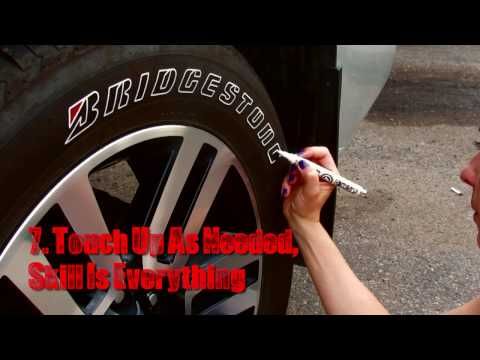
The degree of harmfulness is 8 out of 10. Spring is the time not only for love, but also for resin. The degree of eating depends on the temperature: on a body warmed up under the sun - faster. It completely eats into the varnish and, if not removed in time, will remain forever - well, or until repainted. I strongly recommend that owners of cars with soft varnish, especially "Japanese women", especially hurry up with cleaning.
Resin should be removed as soon as possible. It eats up the varnish, craters remain on the paintwork, irreducible yellow spots on the light one. And the poplar one completely penetrates under the varnish and swells it from the inside. By the way, even a harmless-looking pear leaves marks that will have to be polished.
What to clean? Special formulations for wood buds. They are made on the basis of a mixture of solvents or citrus essential oils. Pros call such mixtures "oranges".
Whitish spots, mostly visible when the machine is dry.
| Lime stains and poplar bud marks. The resin stain was defeated only by abrasive polishing: it is removed along with the top layer of varnish. Lime stains and poplar bud marks. The resin stain was defeated only by abrasive polishing: it is removed along with the top layer of varnish. | Two cars - Ford Focus and Audi A6 - stood side by side in the same parking lot, where lime leaked from the ceiling. At Focus, after removing the drip of lime, swollen varnish was found; it was not possible to return it to its original appearance even after sanding with abrasives. On the Audi, the varnish remained intact, but I had to polish the traces of damage that arose after the owner of the car tried to wipe off the lime on his own. The photo shows the process of removing these traces with a special acid composition - it is clear that a chemical reaction is taking place. Two cars — a Ford Focus and an Audi A6 — stood side by side in the same parking lot, where lime had leaked from the ceiling onto them. At Focus, after removing the drip of lime, swollen varnish was found; it was not possible to return it to its original appearance even after sanding with abrasives. On the Audi, the varnish remained intact, but I had to polish the traces of damage that arose after the owner of the car tried to wipe off the lime on his own. The photo shows the process of removing these traces with a special acid composition - it is clear that a chemical reaction is taking place. |
Related materials
Correct the face - how to restore the shine to the body
The degree of harmfulness is 6 out of 10. Such traces appear mainly on those cars that are based in underground parking lots, but they can also make shopping center customers happy. The consequences reveal themselves in the form of irreversible marks on the varnish; it is not always possible to defeat them by polishing.
Can I clean myself? It will be possible to remove the streaks themselves, but it is not always possible to cope with the consequences of their activity - professional polishing may be required. And then the color of the body part.
What to clean? It is best to use specialized acid formulations. If the case is not the most severe, try working on the lime with vinegar.
This is usually hot dust from the brake pads that flies out during braking and settles on the body. Moreover, it does not just settle, but literally bites into the varnish. And then it starts to rust, revealing itself as red dots, especially clearly visible on light cars.
Harmfulness - 4 out of 10. Unpleasant, but not fatal. It is difficult to assess the degree of harmful effect on the varnish, the damage is mainly aesthetic.
Can I clean it myself? Yes, and with relatively little bloodshed - washing the car at the dacha or self-service car wash.
What to clean? Only special pH-neutral formulations that are labeled "disc cleaners" work well: they do an excellent job with such troubles.
Appears as a yellowish oily film. They are especially noticeable on cars that are stored in warm parking lots.
The degree of harmfulness is 2 out of 10.
Can I clean it myself? During washing - yes.
What to clean? Anti-bituminous compounds, because the nature of the pollution is similar to that of bitumen.
Chitin, blood!
Insects that have eaten into the paintwork. And here you can’t do without polishing.
Insects that have eaten into the paintwork. And here you can’t do without polishing. Hazard rating 8 out of 10 It's hot, the traffic jam, the hood got hot - and went to collect the "harvest". Insects flatten themselves on the car, leaving characteristic marks that eat into the varnish.
Can I clean it myself? Possible. Sprayed, washed off - nothing complicated. But you need a special composition.
What to clean? If the car was not hot, and the insects did not spend too much time on the hood, then a regular car shampoo will do the trick. If the varnish is not hard enough, and the body was heated at the time of the murder, then special equipment is indispensable. And if the car sits for a week in the heat in the company of dead flies, then you will have to pay a visit to the polishers.
Nothing needs to be explained here.
Traces of bird droppings that were not washed away in time. At the car wash, they can no longer cope with this ailment - you will have to contact the polisher.
Traces of bird droppings that were not washed away in time. At the car wash, they can no longer cope with this ailment - you will have to contact the polisher.
The degree of harmfulness is 10 out of 10. Time works against you. As long as the excrement is on the body, they will tend to penetrate deep into the paintwork. And even more: the substance passes through the paintwork to the metal, swells the varnish and damages the base paint layer. In this case, you will have to recolor the element.
Can I clean it myself? Not only possible, but also necessary - as soon as you notice.
What to clean? At least plain water or a damp cloth. If it was not possible to immediately wash it off with water, then no means will help: only polishing or repainting.
Related materials
Home remedies instead of car chemicals: expert advice
This is an epoxy-based paint with high adhesion and wear resistance. You can pick it up on wet markings.
The degree of harmfulness is 10 out of 10.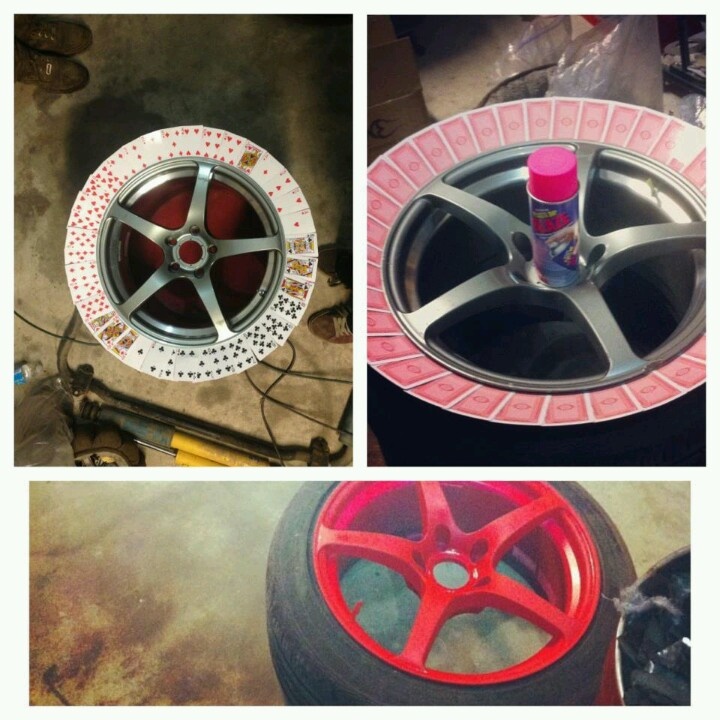
Can I remove it myself? If it's a simple yellow paint used to mark a parking lot, then alcohol, such as isopropyl alcohol, will do. Or a kidney remover. But if this is downright white markings, then it’s better not to even try - such paint will have to be removed by abrasive means. You can call on polishing clay to help, but after that the cleaned places will have to be polished.
What to clean? See paragraph above. It all depends on the wear resistance class of the markup. If alcohol-containing formulations fail, go to the professionals.
Related materials
Armor cosmetics: comparing protective body polishes
Painting drizzle flies from the facades of buildings, bridge supports and other metal structures during all kinds of repair work - the wind to help her. In general, whenever a city is put in order, the cars get into a mess.
The degree of harmfulness is 10 out of 10. Someone else's paint can stay on the body forever and force you to do a complete repaint.
Can I clean it myself? Only if the contamination is fresh. You will have to use a solvent designed for this type of paint.
What to clean? Water-based emulsion, while fresh, can be washed off with water, if dried, try wiping with alcohol. Paint based on white spirit - white spirit, respectively. And if it is an industrial, especially resistant paint? In general, the main problem is to determine the type of paint. And we must not forget that the varnish can “matte” (become dull), and a vigorous solvent like “646” can swell the top layer of the varnish or completely remove it - in general, anything can happen. And then you have to polish the surface.
It is easy to find near the construction site: you never know where you have to leave the car in the city.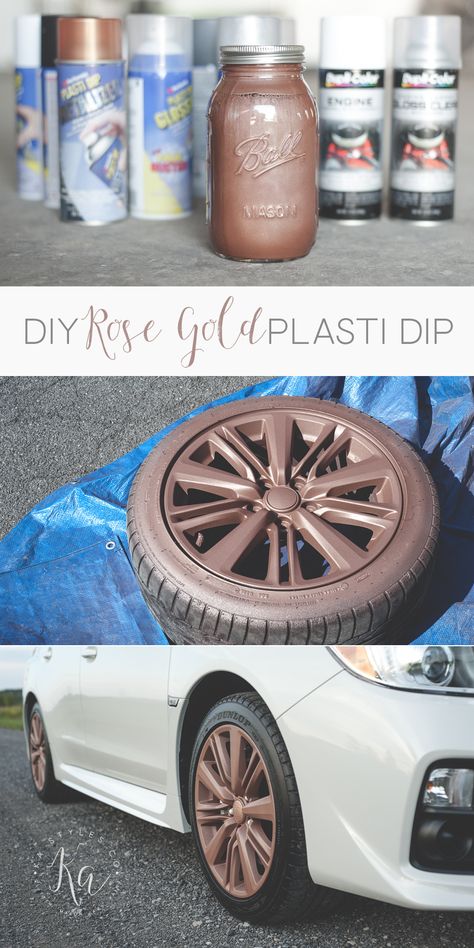 A drop of concrete is a real nuisance.
A drop of concrete is a real nuisance.
The degree of harmfulness is 10 out of 10.
Can I remove it myself? Yes, if you have experience and chemical education, as well as a certain courage. If you have the above, look in building markets for a tile cleaner that washes away building mixtures.
What to clean? Will have to dissolve. Professionals use aggressive acids, which must be promptly removed from the paintwork in order to avoid damaging it. The procedure will have to be repeated several times. And in any case, in the final you can not do without polishing.
Related content
As a polish: testing car body paint care products
If you decide to deal with pollution yourself, there are a few simple rules to follow. After applying the cleaning composition to the surface, let it work. If normal flushing with water is not enough, microfiber should be used.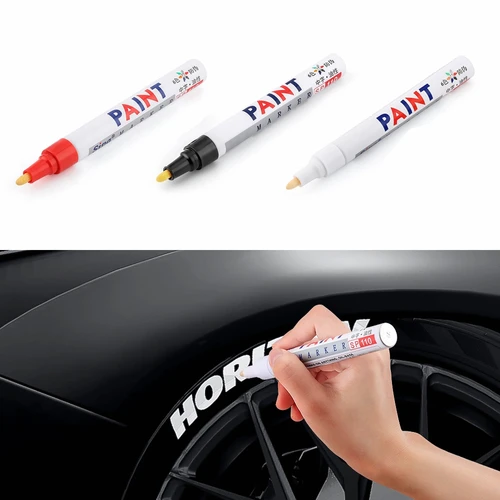 In no case do not wipe with pressure - only with light movements. The most important thing: the machine must be clean during operation, otherwise you can scratch the paintwork. Most likely, sand is present in the body of pollution, and it will rub off the varnish on your car: a clean and smooth speck surrounded by a hazy halo will remain in place of the dirt.
In no case do not wipe with pressure - only with light movements. The most important thing: the machine must be clean during operation, otherwise you can scratch the paintwork. Most likely, sand is present in the body of pollution, and it will rub off the varnish on your car: a clean and smooth speck surrounded by a hazy halo will remain in place of the dirt.
* * *
The professional line offers cleaners for everything from reaction metal cleaner and tree bud remover to alcohol cleaner and bitumen cleaner. There are also fairly versatile products that can deal with both bitumen and traces of wood buds, stickers and other contaminants - and at the same time do not spoil rubber seals and plastic. And to remove stubborn metal (for example, dust from pads), which eventually turns into red dots, a special pH-neutral composition is used that dissolves these dots. It is curious that the purple color, which the composition turns into when it hits metal inclusions, is a kind of working indicator of a chemical reaction.